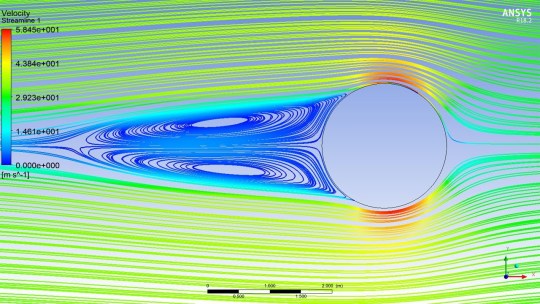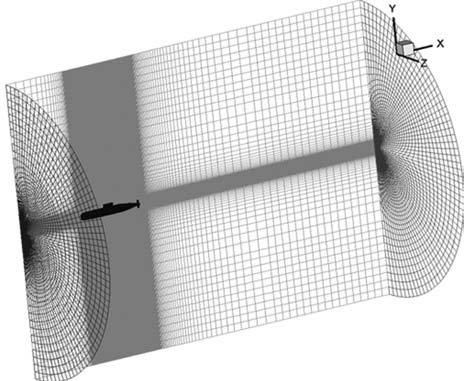#Ansys
Text

Unlocking Success: Mastering ANSYS Assignments in Mechanical Engineering
Hello, fellow engineering enthusiasts! If you've found your way to this blog, chances are you're navigating the intricate world of Mechanical Engineering, specifically dealing with ANSYS assignments. As someone deeply entrenched in the field, I understand the challenges that students often face when tasked with ANSYS assignments. Fear not; I'm here to guide you through effective strategies that can lead to triumph. Whether you're a newcomer or a seasoned student looking to enhance your skills, mastering ANSYS assignments is crucial for success in the dynamic realm of Mechanical Engineering. So, let's dive in and explore how to conquer these challenges and complete your ANSYS assignment with confidence.
Understanding the Basics
Before we delve into advanced strategies, it's crucial to establish a solid foundation in ANSYS. The software is a powerful tool used for simulation and analysis in various engineering disciplines. To complete my ANSYS assignment successfully, I always start by revisiting the basics. Understanding the software's interface, features, and capabilities is fundamental. ANSYS offers a plethora of resources, including tutorials, documentation, and forums, which can be immensely helpful in grasping the essentials. Don't underestimate the value of a strong foundational knowledge—it's the key to tackling complex assignments with ease.
Stay Updated with the Latest Versions
As an expert in Mechanical Engineering, I cannot emphasize enough the importance of staying abreast of the latest developments in ANSYS software. Regular updates often introduce new features, enhancements, and bug fixes that can significantly impact your workflow. To ensure you are maximizing the potential of ANSYS in your assignments, make it a habit to check for updates and explore the new functionalities. This proactive approach not only keeps you informed but also demonstrates a commitment to continuous learning—a trait highly valued in the engineering industry.
Utilize Online Resources and Communities
One of the most valuable assets at your disposal is the vast network of online resources and communities dedicated to ANSYS users. When aiming to complete my ANSYS assignment, I often turn to forums, blogs, and discussion groups. Platforms like the ANSYS Student Community and various engineering forums host a wealth of information, ranging from troubleshooting tips to in-depth discussions on specific simulation techniques. Engaging with these communities not only broadens your knowledge but also provides a platform to seek guidance when faced with challenges.
Effective Time Management
Completing ANSYS assignments requires a strategic approach to time management. Procrastination is the nemesis of productivity, especially when dealing with complex simulations and analyses. To ensure success, create a realistic schedule that allocates sufficient time for each phase of the assignment—from understanding the problem statement to presenting the results. Break down the task into manageable chunks, setting milestones to track your progress. This systematic approach not only enhances your efficiency but also reduces the stress associated with looming deadlines.
Hands-On Practice
The adage "practice makes perfect" holds true in the realm of ANSYS assignments. No amount of theoretical knowledge can substitute for hands-on experience with the software. Dedicate time to practical exercises and small-scale simulations to reinforce your understanding of ANSYS functionalities. Experiment with different features, boundary conditions, and material properties to gain a deeper insight into their effects on simulation outcomes. This practical experience not only hones your skills but also boosts your confidence when tackling more complex assignments.
Seek Guidance from Mentors and Peers
In the journey to complete my ANSYS assignment successfully, I've found immense value in seeking guidance from mentors and collaborating with peers. Establishing a mentor-student relationship with a faculty member or industry professional provides a unique opportunity to gain insights from real-world applications. Additionally, collaborating with classmates on assignments fosters a collaborative learning environment. Discussing ideas, troubleshooting challenges, and sharing experiences can lead to innovative solutions and a more comprehensive understanding of ANSYS.
Documentation and Presentation Skills
An often overlooked aspect of ANSYS assignments is the importance of documentation and presentation. As a Mechanical Engineering expert, I've learned that the ability to communicate your findings effectively is as crucial as the technical skills involved. Develop a clear and concise documentation style that highlights the key steps, assumptions, and results of your analysis. Pay attention to formatting, labeling, and presenting data in a visually appealing manner. Remember, your ability to convey complex engineering concepts in a comprehensible way adds significant value to your work.
Stay Persistent and Embrace Challenges
The path to success in mastering ANSYS assignments is not without its challenges. There will be moments of frustration, setbacks, and seemingly insurmountable obstacles. However, it's essential to stay persistent and view challenges as opportunities for growth. Each roadblock presents a chance to enhance your problem-solving skills and deepen your understanding of the software. Embrace challenges with a positive mindset, knowing that overcoming them will only strengthen your expertise in Mechanical Engineering and ANSYS.
Conclusion
In conclusion, mastering ANSYS assignments in Mechanical Engineering is a rewarding journey that demands a combination of foundational knowledge, practical experience, and effective strategies. From understanding the basics and staying updated with software advancements to utilizing online resources and embracing challenges, the key lies in a holistic approach to learning and application. As you embark on your quest to complete your ANSYS assignment successfully, remember that every simulation and analysis is a stepping stone toward becoming a proficient engineer. So, dive in, explore, and conquer the world of ANSYS with confidence and enthusiasm. Your success awaits!
#mechanical engineering assignment help#assignment help#students#university#educational website#study tips#education#educational service#mechanical engineering#mechanical engineering assignment#complete my ANSYS assignment#ansys assignment help#ANSYS
10 notes
·
View notes
Text
Computational fluid dynamics





Ansys CFD simulations === contemporary art, fight me
#computational fluid dynamics#simulation#Ansys#contemporary art#modern art#postmodernism#graphic design#inspiration
2 notes
·
View notes
Text
youtube
ANSYS wave simulation
3 notes
·
View notes
Text
0 notes
Text
GMSPAZIO e AFCEA tracciano le nuove strategie per le missioni spaziali
Il 7 maggio a Roma, presso il Circolo Ufficiali de “la Casa dell’Aviatore” (Viale dell’università, 20) GMSPAZIO e AFCEA in collaborazione con Ansys presentano: “Presente e futuro dello Spazio: modellazione e simulazione delle missioni spaziali”, un appuntamento dedicato agli esperti del settore e a chi si occupa di progettazione e sviluppo di sistemi di propulsione, satelliti e del futuro delle stazioni e dei veicoli spaziali. Alla conferenza, il cui prestigioso palcoscenico ospita anche il Presidente del Consiglio Regionale del Lazio, Antonello Aurigemma, si aprono le porte del futuro, evidenziando le nuove strategie per le missioni spaziali. La giornata è presieduta dal Generale (ris.)
0 notes
Link
#Ansys#artificialintelligence#AWS#BlackwellGPU#Cadence#DellTechnologies#Futurride#GB200GraceBlackwell#GB200NVL72#generativeAI#GoogleCloud#GPU#largelanguagemodels#LLMs#Meta#MicrosoftAzure#NIMs#Nvidia#NvidiaBlackwell#NvidiaGTC#NvidiaInferenceMicroservices#NVLink#OpenAI#OracleCloudInfrastructure#sustainablemobility#Synopsys#Tesla#TSMC#xAI
0 notes
Text
From Ansys finite element analysis to Rhino voxel Brep by deserializing the point data and associated stress values
1 note
·
View note
Text

Greetings, fellow mechanical engineering enthusiasts and aspiring Ansys aficionados! Today, we embark on a journey through the intricate world of Ansys theory, delving deep into complex problem-solving techniques that are pivotal for mastering this powerful simulation software. Our expert has meticulously crafted a comprehensive solution to a master-level Ansys theory question, designed to sharpen your understanding and equip you with the skills needed to excel in your mechanical engineering assignments.
Understanding Finite Element Analysis in Ansys
Finite Element Analysis (FEA) lies at the heart of Ansys, enabling engineers to simulate and analyze the behavior of structures and mechanical systems under various conditions. To truly harness the capabilities of Ansys, one must grasp the fundamentals of FEA, including mesh generation, boundary conditions, material properties, and solving techniques.
Master-Level Ansys Question:
Question:
A cantilever beam is subjected to a concentrated load at its free end. Using Ansys, determine the deflection at the free end of the beam.
Solution:
To solve this problem using Ansys, we first need to create a finite element model of the cantilever beam. This involves defining the geometry of the beam, assigning material properties, meshing the structure, and applying boundary conditions.
Geometry and Meshing: We start by creating a 3D model of the cantilever beam in Ansys DesignModeler. Define the dimensions of the beam and create a solid model.
Material Properties: Specify the material properties of the beam, including Young's modulus and Poisson's ratio, to accurately represent its behavior under loading conditions.
Mesh Generation: Generate a mesh on the beam using Ansys Meshing. Ensure that the mesh is refined enough to capture the stress variations accurately, especially near the point of loading.
Boundary Conditions: Apply boundary conditions to mimic the physical constraints of the problem. For a cantilever beam, fix the base of the beam to restrict its movement and apply the concentrated load at the free end.
Solution: Once the model is set up, solve for the deflection using Ansys Mechanical. The software will calculate the deformation of the beam under the applied load, providing us with the desired deflection at the free end.
Post-Processing: Analyze the results obtained from Ansys Mechanical to gain insights into the behavior of the beam. Visualize the deformation using contour plots and extract the deflection at the free end for further analysis.
Conclusion: In this blog post, we've tackled a master-level Ansys theory question, demonstrating the application of Finite Element Analysis in solving complex mechanical engineering problems. By mastering these fundamental principles and techniques, you'll be well-equipped to tackle challenging assignments and projects with confidence. Remember, for expert assistance in solving your Ansys assignments, look no further than mechanicalengineeringassignmenthelp.com. Solve your Ansys assignment and elevate your mechanical engineering journey today!
Stay curious, stay innovative, and keep exploring the limitless possibilities of Ansys!
1 note
·
View note
Text

Get help in creating your ANSYS simulation workbench fluent.
Contact :
Facebook:
https://facebook.com/civilthinking1
Email:
1 note
·
View note
Text
Boundary Layer Theory - Part V: Development
Intrduction
In the previous posts of the “Boundary Layer Series,” we explored how separation is determined by the interplay between the viscous shear-stress gradient ∂τ/∂y and the pressure gradient dp/dx. However, you may wonder how separation in laminar flow can be unaffected by the Reynolds number. After all, doesn’t a change in Reynolds number alter the viscous stress?
Indeed, a change in…

View On WordPress
0 notes
Text

Unlock the potential of design and simulation today!
Are you passionate about bringing innovative designs to life and simulating their real-world performance? Our Certificate Course in Design and Simulation offers a comprehensive learning experience tailored to help you excel in this dynamic field.
Course Overview:
Duration: [90 Hours]
Mode: [Online/Offline]
Level: Beginner to Intermediate
Course Highlights:
- Introduction to Design Principles: Gain insights into the fundamental principles of effective design, covering aesthetics, functionality, and user-centered approaches.
- CAD Software Proficiency: Master industry-standard Computer-Aided Design (CAD) software tools to create intricate designs with precision.
- Simulation Techniques: Learn to simulate and analyze designs using advanced software, predicting real-world behavior and performance.
- Product Prototyping: Discover the art of prototyping, turning your design concepts into tangible models for evaluation and refinement.
- Project-based Learning: Apply your skills to real-world projects, solving design challenges and refining your problem-solving abilities.
- Industry-Relevant Curriculum: Stay up-to-date with the latest trends in design and simulation, ensuring your skills align with industry demands.
- Expert Faculty: Learn from experienced professionals who bring real-world insights into the classroom.
Who Should Attend:
Students aspiring to become design and simulation experts.
Entrepreneurs aiming to enhance their product design and development processes.
Why Choose Us:
- Practical Approach: Hands-on training for practical skill development.
- Modern Facilities: Access to state-of-the-art labs and software.
Industry Networking: Opportunities to connect with experts and peers.
- Certificate of Completion: Recognized certification upon course fulfillment.
Enroll Today:
Elevate your career prospects with our Certificate Course in Design and Simulation. Whether you're looking to enter the industry or enhance your existing skills, this course will empower you to thrive in the world of design and simulation.
For course details, fees, and enrollment, visit: https://tiet.in/enquiry.aspx or contact us at [01244221797 | +91-8448827719( ) | +91-9211918664] or [[email protected]].
#designandsimulation#simulation#Catia#AutoCAD#certificatecourse#certificatecourses#skillsenhancement#tiet#TickooInstitute
0 notes
Text

We help Africa’s top performing students from disadvantaged background, acquire the much needed skills for future success by partnering with NPO's.
If you are a deserving student, please use this link. http://surl.li/jkapg
#CAD#CAM#CAE#AutoCAD#ArchiCAD#AVEVA#ANSYS#Creo#CATIA#Primavera#PPM & MS#Project#Pro/ENGINEER#Wildfire#STAADPro#SolidEDGE#PcSchematic#PDMS#Piping#Plant#3D#Drafting#Design#P6#Management#Test#Drive#Civil#Mechanical#Electrical
1 note
·
View note
Text
0 notes
Text
Improve Management of the Structural Integrity of an Asset through Digital Twins
Digital twins can be an effective tool for improving the management of the structural integrity of an asset.
Here are some steps to consider:
Develop an accurate digital twin: The digital twin should be a highly exact virtual replica of the physical asset. This requires gathering and analyzing data from various sensors, devices, and other sources to create a detailed model of the…

View On WordPress
#5G technology#ANSYS#Artificial Intelligence#Asset Structural#AVEVA#AWS#Azure#digital transformation#Digital twin#Digital Twins#Electric Vehicle#Electric Vehicles#Energy saving#EV#GE Digital#Improve Management#IOT#Siemens#Solar Power#structural integrity
0 notes